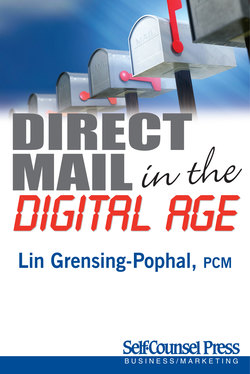Читать книгу Direct Mail in the Digital Age - Lin Grensing-Pophal - Страница 39
На сайте Литреса книга снята с продажи.
4. Is Your Target Market Online?
ОглавлениеAn important audience consideration in this digital age is whether or not your target market is online. Despite the fact that the Internet, social media, and online marketing seem to be what “everybody who is anybody” is talking about these days, marketers should not assume that they should be attempting to reach their audience online. It depends. Just as when researching and analyzing other attributes about your potential audience (e.g., age, income, geography), you need to consider whether your target market may be effectively reached online or whether they are still best reached through traditional mail.
General research can provide some direction. For instance, Pew Research Center conducted a survey in 2010[*] which surprisingly points out that about one-third of the American population does not use a broadband (Internet) connection in their homes. Two-thirds (66 percent) of American adults do currently use a high-speed Internet connection at home, up only 3 percent since the 2009 survey. There are racial differences, as well. For instance, broadband adoption by African-Americans now stands at 56 percent, up from 46 percent in 2009. Clearly not everybody uses the Internet. Therefore, it is very important for marketers to find out whether their target audiences are among the two-thirds who indicate they do use high-speed Internet in their homes. Data also suggests that a significant amount of nonbusiness Internet use occurs in the workplace.
Here’s what some consumers had to say about the issue:
• “Snail mail can be useful. It has the ‘different’ factor. A well-written, handwritten note from an advertiser can go a long way toward creating consumer interest … if it has the differentiating factor. It may be a bit tedious to create, but the effect will last longer. Too often email is considered spam and deleted without opening.”
• “Direct mail if well-presented would lead to it being opened. The fact is, direct mail has a higher rate of being opened than email. With the latter, it’s just so easy to trash it, but when people hold it in their hand and are either walking into the house or the office, they have time to spare and would likely be opening the mail. So, old-fashioned mail is better to me.”
• “Probably snail mail gets more attention — first because there’s less of it. Second, because it takes fractionally longer to dispose of. I actually have to walk with it to a waste paper bin to drop it in so it has a few seconds to engage my attention. Third, because the physical medium allows a variety of shapes, sizes, even feel of paper and a bulge which just might be a freebie inside that I might be interested in. All email has is bold type in the subject line to get my attention. Fourth, and last, because there’s always a chance that it might be something useful. Most snail mail gets read, whereas with email they’re often just dropped in the trash.”
Are these comments reflective of your target audience? Who knows? The point is don’t assume, either one way or the other. If you don’t know your consumers well enough to determine whether traditional direct mail, the online variety, or a combination of both would be most effective, it certainly pays to find out!
